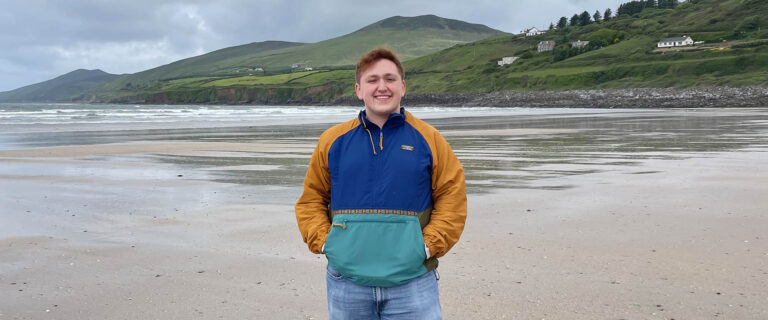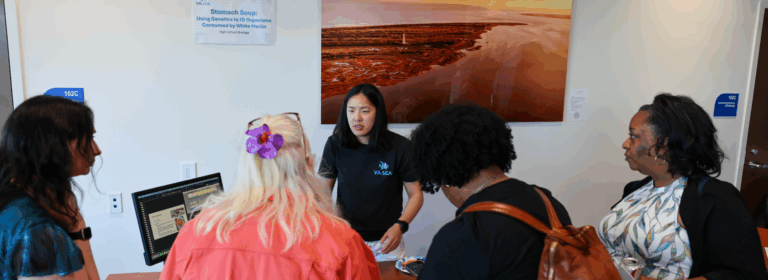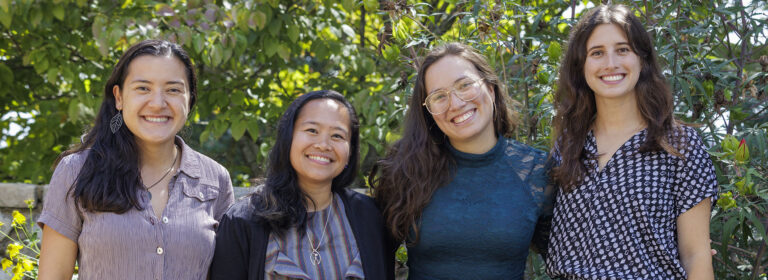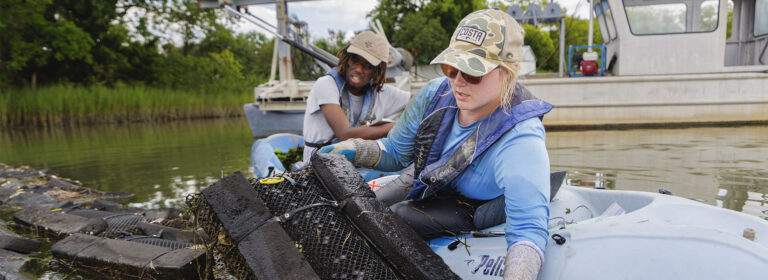Blue Crab Bowl celebrates 25 years of bringing ocean science to high-schoolers
What happens to the speed of sound in saltier water? This is the type of question Virginia high school students will answer at the 25th Blue Crab Bowl, an annual ocean science competition hosted by Old Dominion University and the Virginia Institute of Marine Science. From the first competition in 1998 to now, nearly 2,000 students from 61 schools across Virginia have participated in the Blue Crab Bowl. This year’s competition, which runs Feb. 11-12, will include 70 high schoolers from 13 schools.
The competition, sponsored by the National Ocean Science Bowl, consists of 140 multiple-choice questions and several short-answer questions. While the Bowl is focused on ocean science generally, questions span a range of disciplines from biology, chemistry, physics, science policy, and maritime history.
“It’s just fun to learn — That’s one motivator for some kids,” said Bill Dunn, ODU’s regional coordinator and a former Blue Crab Bowl coach. “The other motivator is the competitive nature of the event. You sit across from another team, you’ve got buzzers in your hand, and you’re trying to beat them to the answer.”
Although this year’s Blue Crab Bowl will be a virtual format, students typically gather at either the VIMS or ODU campus to compete head-to-head with buzzers, providing opportunities to interact with the marine scientists who volunteer as competition officials between the rounds of the competition. Last year, volunteer officials contributed more than 700 hours to make the virtual Blue Crab Bowl successful — some volunteers even Zoomed in from across the country to give back to the virtual bowl.
“To have that many volunteers show up and dedicate that much time for 70 kids says a lot for what these two universities think about Blue Crab Bowl,” said Bethany Smith, the VIMS Blue Crab Bowl Regional Coordinator and a marine education specialist with the VIMS Marine Advisory Program. “It shows the importance of investing in our high school students in the area, and promoting marine science and oceanography as career pathways for these students.”
For volunteers, Blue Crab Bowl presents an opportunity to share their love of ocean science with students. Among the volunteers are many former participants who competed in the bowl when they were high school students.
“A lot of students had have gone on to become officials in regional competitions wherever they’ve landed as adults,” said Carol Hopper-Brill, a retired marine education specialist and longtime Blue Crab Bowl participant. “There is a nice ripple effect. If you participate, you value what the competition’s about. You want other young people to have that same experience.”
“It shows the importance of investing in our high school students in the area, and promoting marine science and oceanography as career pathways for these students,” Smith said.
The event has maintained a consistent legacy of hardworking students and coaches, whose dedication is matched by the volunteers and coordinators each year.
Dunn, who coached several Blue Crab Bowl teams as a high school teacher, said many of his former students have gone on to study marine sciences or other sciences. But regardless of whether students continue in the sciences, they carry that knowledge of ocean sciences with them into their future career.
“One year, we went to invite our congressional representatives to support the regional bowls,” Hopper-Brill said. “We went to one office and lo and behold, the legislative aide who met with us had participated in Blue Crab Bowl. Now he was working as a congressional aide. It’s so important to have people who understand or value science in positions like that.”
Although the competition has evolved in small ways throughout the Blue Crab Bowl’s 25-year history, the event has maintained a consistent legacy of hardworking students and coaches, whose dedication is matched by the volunteers and coordinators each year.
“It’s a fun event, and that shows in the number of coaches who bring their kids back year after year, and in the volunteer response,” Smith said. “It’s exciting to think how the competition will continue to grow in the next 25 years.”
Takeaways:
- The Blue Crab Bowl is an ocean science competition for high-school students hosted by the Virginia Institute of Marine Science and Old Dominion University.
- The competition consists of 140 multiple-choice questions and several short-answer questions.
- The competition, now in its 25th year, allows high-school students to learn more about ocean science and meet the scientists who volunteer at the competition.
Photos and video by Aileen Devlin | Virginia Sea Grant
Story by Madeleine Jepsen | Virginia Sea Grant
Published February 10, 2022.
“We went to one office and lo and behold, the legislative aide who met with us had participated in Blue Crab Bowl,” Hopper-Brill said.





